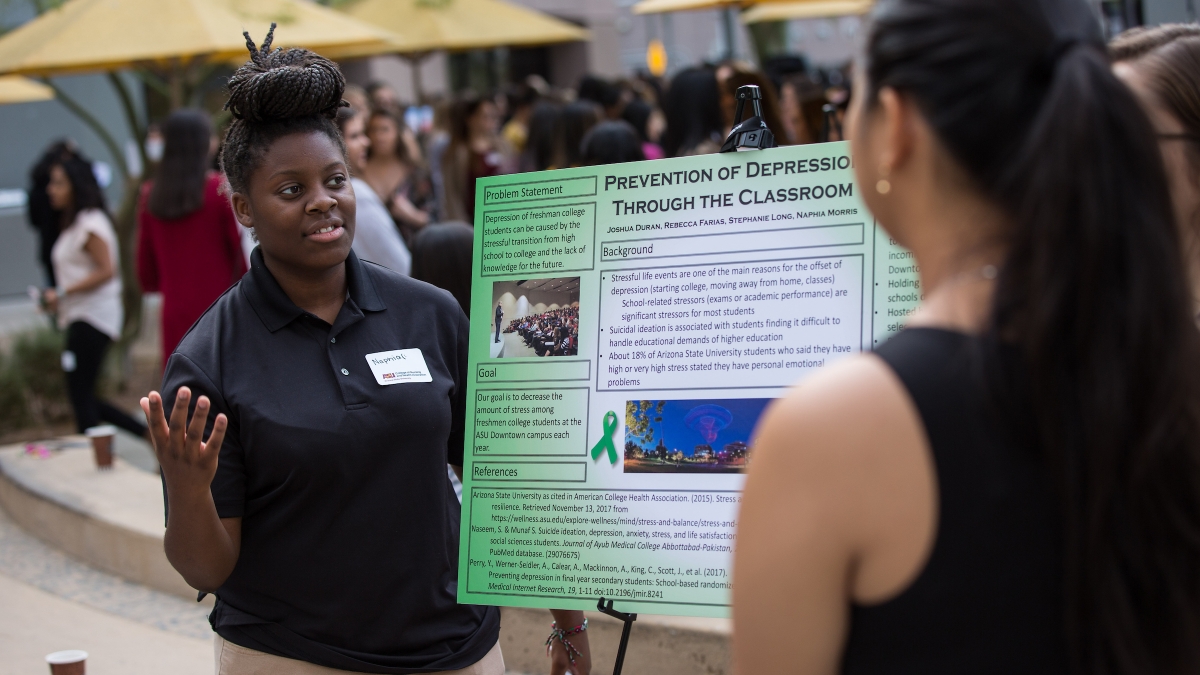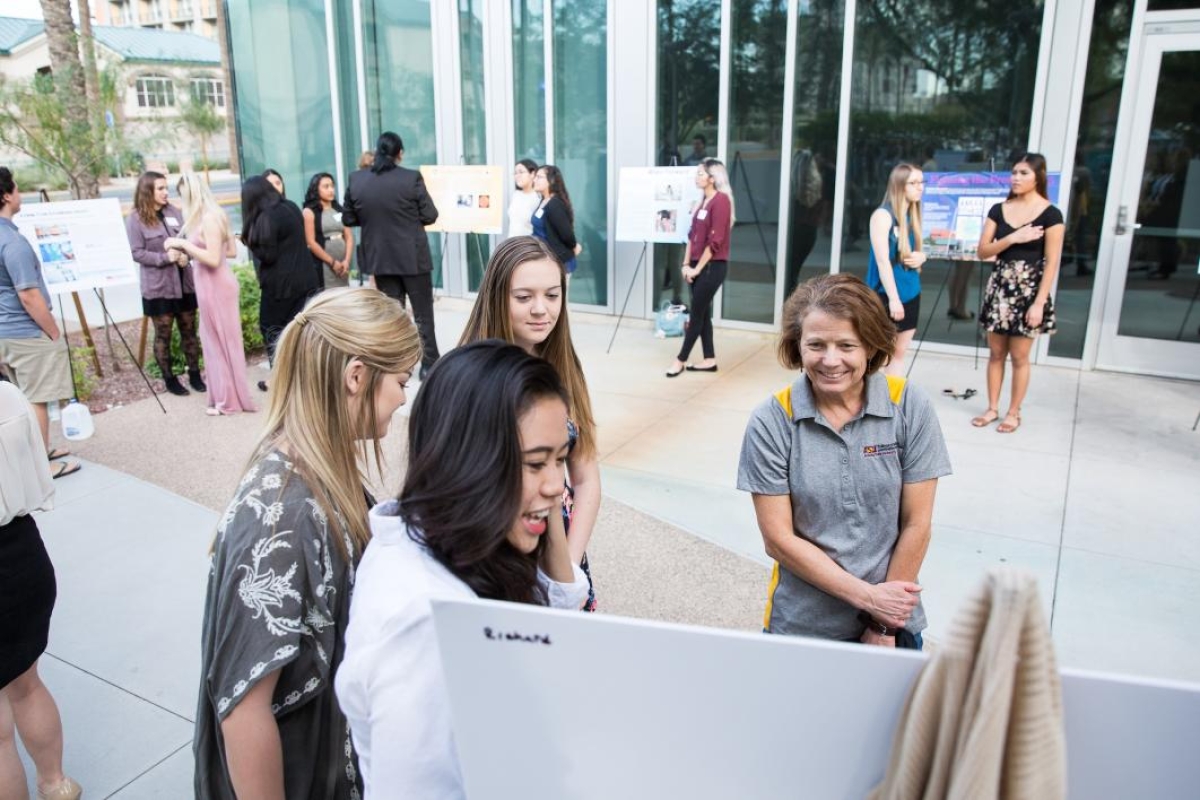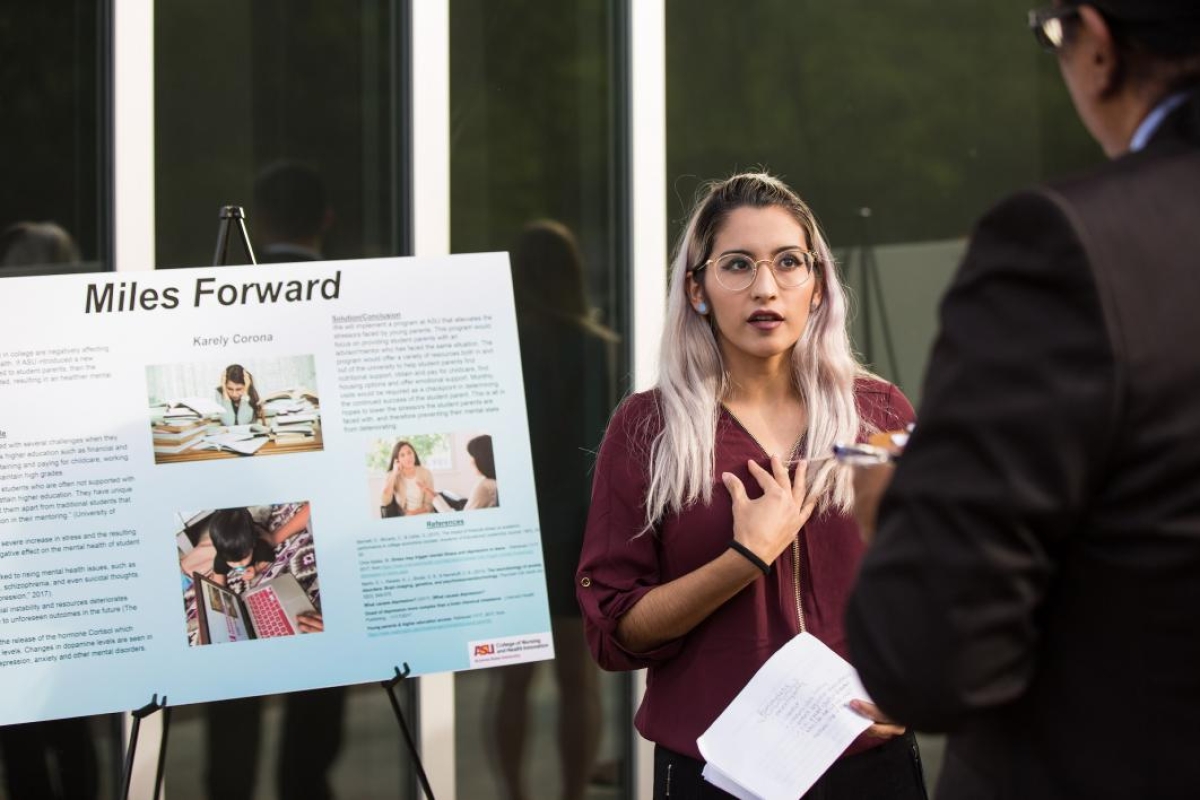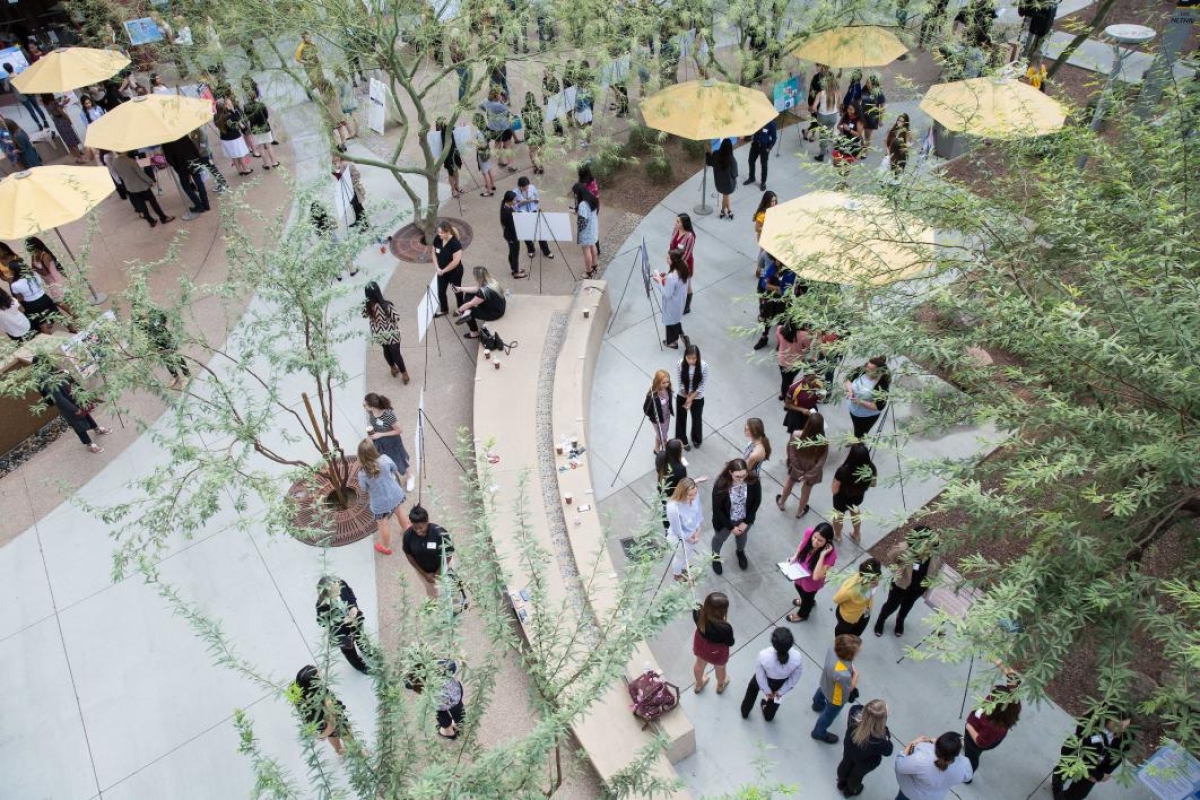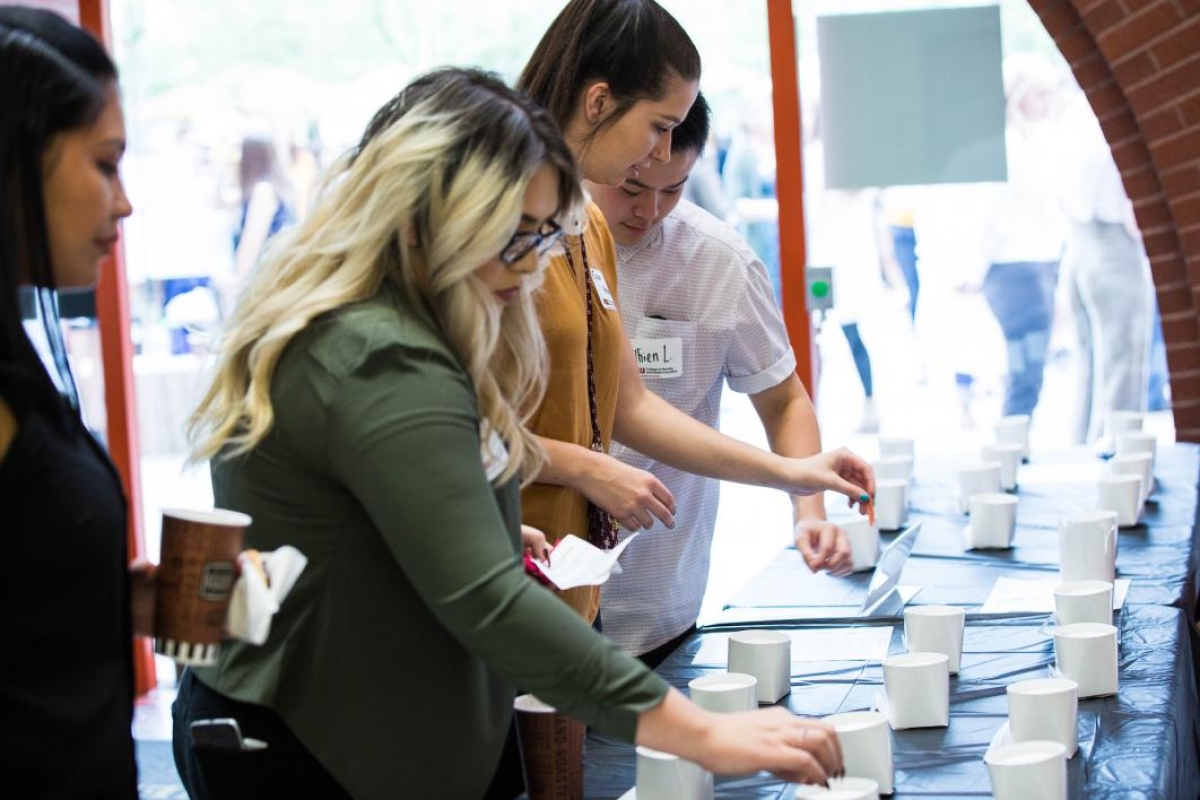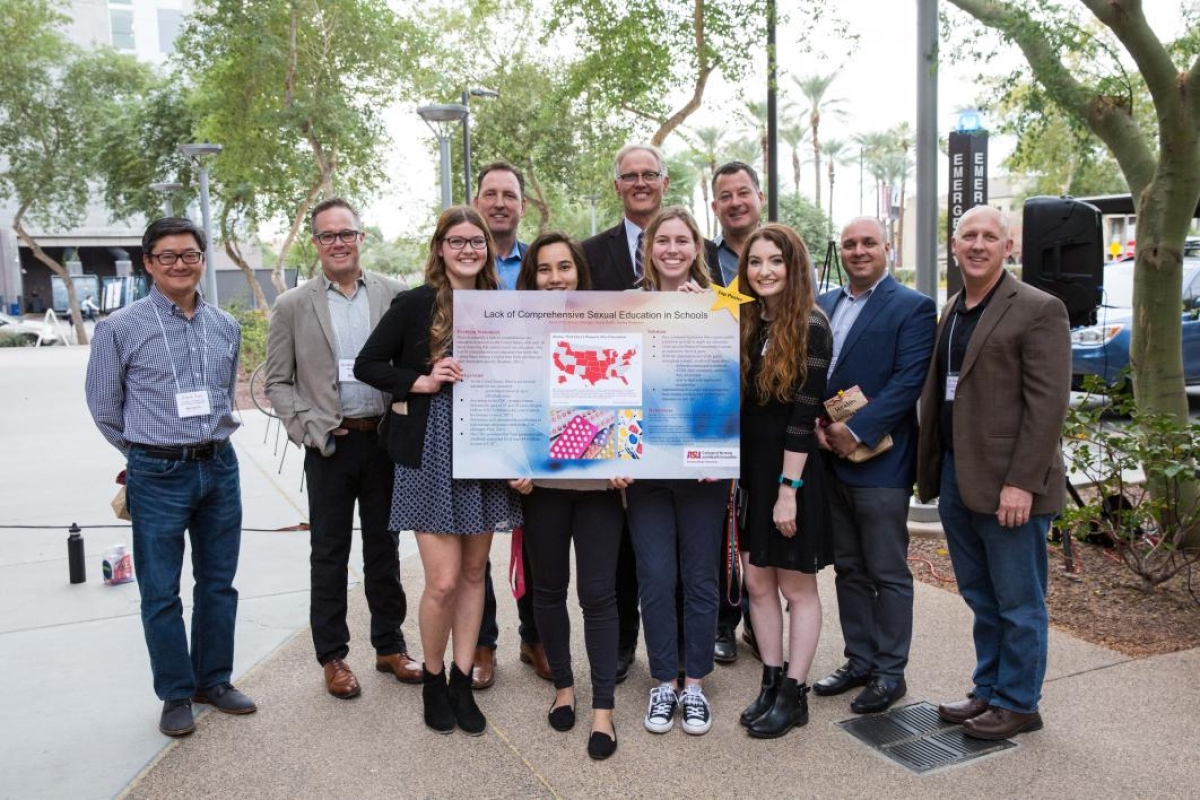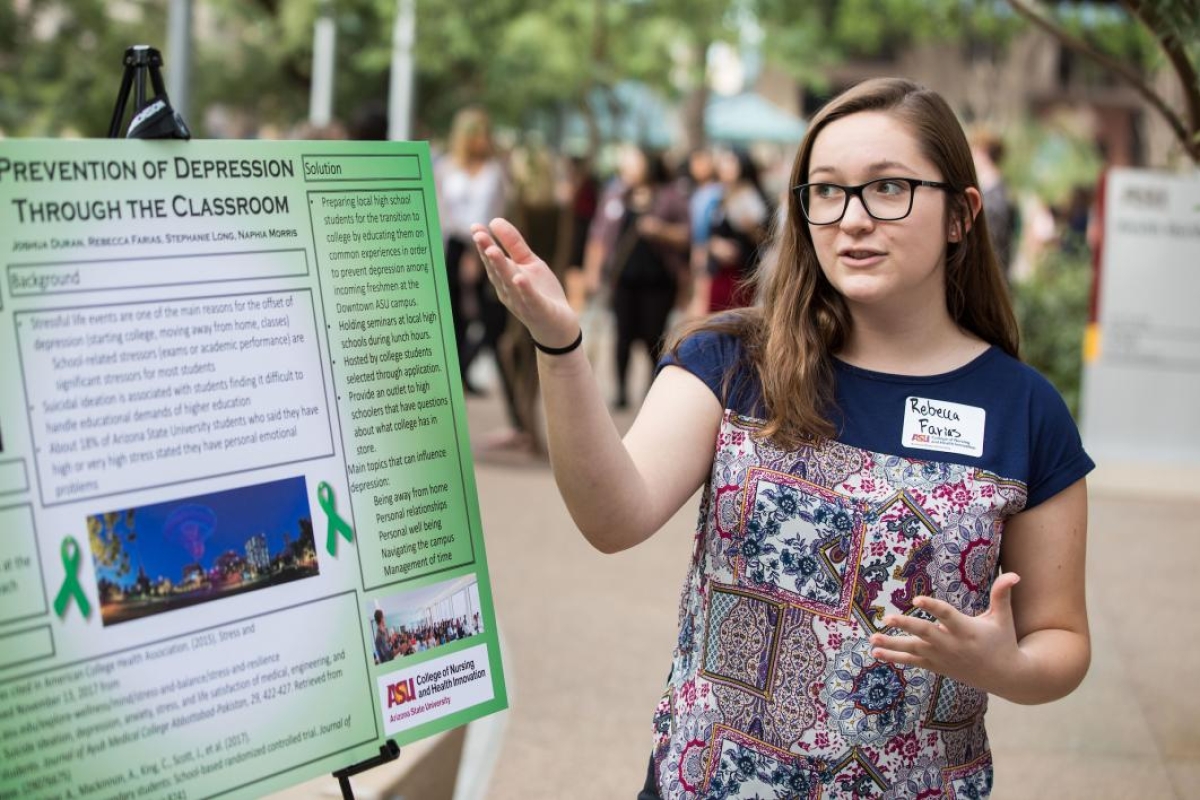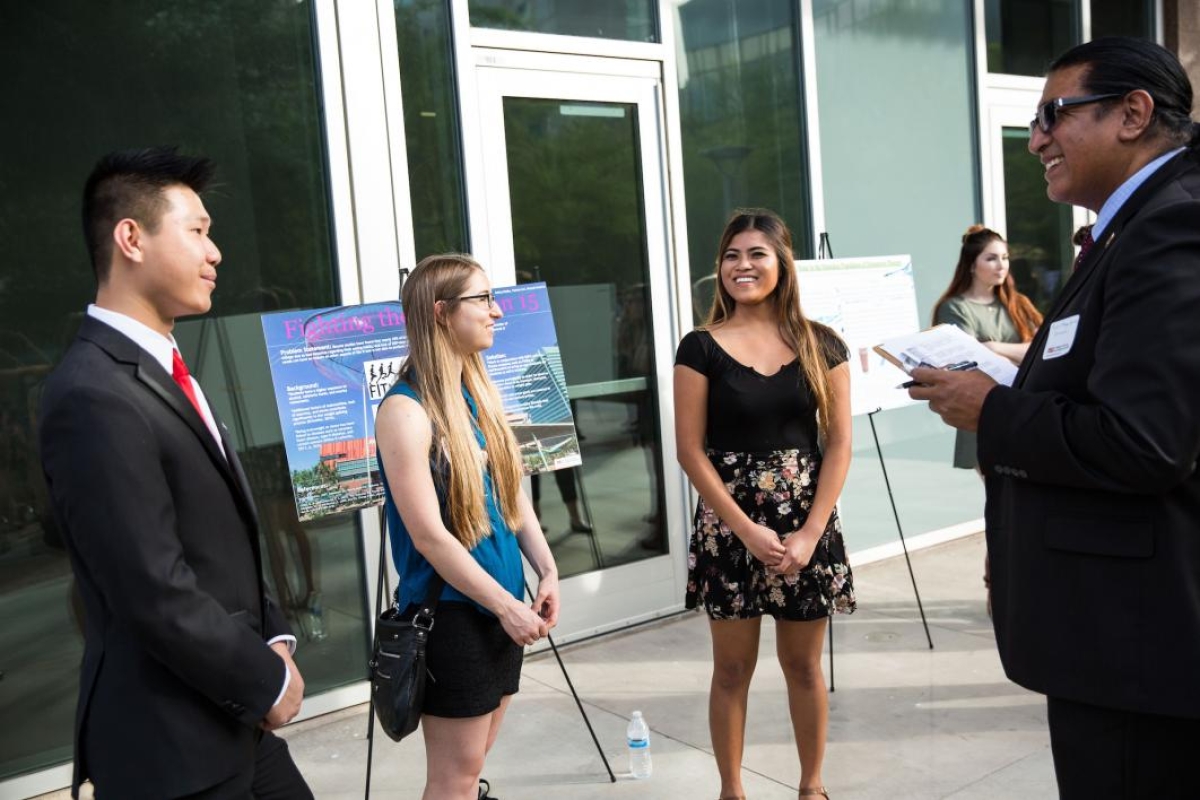Hundreds of Arizona State University students crowded the courtyard between the Health North and South buildings Friday afternoon in downtown Phoenix. On display were posters they’d worked on all semester, with titles like “One Nation under Opioids,” “Abuse at Geriatric Homes” and “HIV Accessibility in Nigeria.”
Tough issues for any undergrad to tackle but especially for a freshman, which all of them were. The posters were the culmination of a semester-long endeavor for their ASU 101 course called the Health Innovation Project.
Friday’s event, the Health Innovation Exhibition, was the College of Nursing and Health Innovation students' chance to showcase an original solution to a real-world problem within the health care industry.
Nancy Kiernan, senior director of academic services and ASU 101 instructor for the college, said the exhibition began three years ago as a way to “start infusing the innovation process as early as freshman year.”
“It’s really about getting them to think of themselves as problem solvers and critical thinkers,” she said.
ASU 101 instructors at CONHI start early in the semester introducing students to the step-by-step process by which innovative solutions are arrived at. First, students identify a health care problem to address, which can be a challenging process in itself.
Nursing freshman Rebecca Farias, whose team settled on “Prevention of Depression Through the Classroom,” said it took them a while to narrow down their topic. They started with the idea to address depression in general, then whittled it down to a particular stressor — in this case, depression caused by the transition from high school to college — then began to think of ways to prevent it.
“Some students struggle with the big picture,” Kiernan said. “This gets them to think about how to take a large-scale problem and work collaboratively with a team and meet deadlines to make an impact.”
Farias’ team’s solution was to send ASU students to talk to high school students about their own experiences and what to expect — a college-prep talk focused more on the social and emotional aspects rather than the brass tacks of financials and grades.
“We really had to think about all aspects of the problem to make the solution a reality,” Farias said.
In addition to encouraging students to think differently about how to address problems in their field, the project also teaches them basic research skills that no doubt come in handy later in their academic careers and beyond.
Community health freshman Nikkalaus Cheever said learning how to use the ASU Library’s online catalogue of scholarly articles was invaluable when researching statistics on homelessness for his team’s project, since sources of information need to be credible.
This was the first year in the exhibition’s three-year history in which a winner was named: “Lack of Comprehensive Sexual Education in Schools,” created by nursing freshmen Alena Britt and Ashley Pinkerton and community health freshmen Grace Lillibridge and Grace Smith.
Britt said the inspiration for the project came from the team’s realization that she was the only one among them who had received any sort of thorough sex education before college. Pointing to a map on their poster that featured a map of the United States showing which states require sex ed — a gross minority — Britt said, “It’s easy to see why the U.S. has the highest teen pregnancy rate.”
Her team’s solution was to implement a sex ed game via a smartphone app in schools across the country. The game would be similar to The Sims, where players have an avatar and make choices about what actions to take, like whether or not to use birth control when you decide to engage in sexual activity. Based on their choice, the app will display facts such as types of birth control, where you can get it and whether your insurance will cover it.
In second place was “Stopping STI’s One Sun Devil at a Time,” and in third was “Preventing Childhood Drowning.” All three teams were invited to utilize the resources of the newly opened HEALab, a health- and wellness-centric entrepreneurship lab on the Downtown Phoenix campus.
Director of HEALab Rick HallRick Hall also serves as the Healthcare Innovation program director and a clinical professor in CONHI. congratulated the winners and encouraged them to use the lab to help take their product or service to market.
Britt said her team will definitely be doing that.
“Hopefully [with the help of HEALab], we’ll be able to actually get this out there and eventually every state will require sex ed,” she said.
Top photo: Community health freshman Naphia Morris presents her group's work on the prevention of depression through the classroom during the Health Innovation Exhibition on Friday on the Downtown Phoenix campus. The College of Nursing and Health Innovation's ASU 101 freshmen created research projects with solutions to real-world projects. Photo by Deanna Dent/ASU Now
More Health and medicine

Bird flu: Your questions on symptoms, spread and safety answered
Bird flu is no longer only “for the birds.”Infections have expanded beyond wild birds and poultry to a range of animals — from mice to mountain lions, dairy cows to domestic cats, and polar bears to…

Making medicine side-effect free
Many drugs that address medical conditions can come with serious side effects. In drug commercials, the litany of potential side effects is often longer than the benefits being touted. Carl…

Diagnostic research happening at ASU focused on detecting diseases earlier to save lives
It was one of America’s founding fathers, Benjamin Franklin, who may have foreshadowed today’s health care innovation when he quipped the adage: An ounce of prevention is worth a pound of cure.In…


